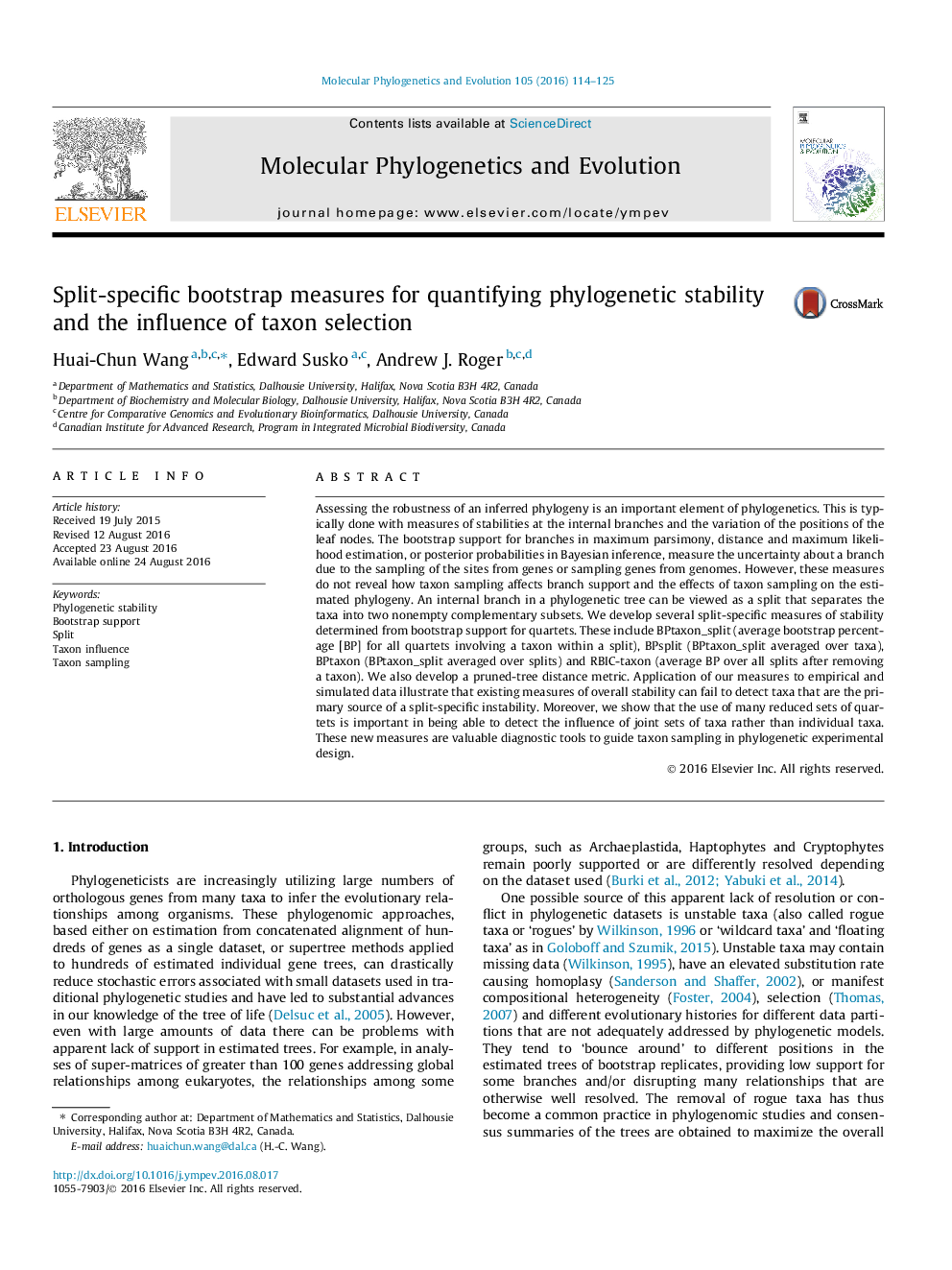| Article ID | Journal | Published Year | Pages | File Type |
|---|---|---|---|---|
| 2833615 | Molecular Phylogenetics and Evolution | 2016 | 12 Pages |
•Several new split-specific measures of phylogenetic stability are proposed.•BPtaxon_split quantifies the influence of individual taxa for a split.•BPtaxon measures the overall stability of the taxa in a phylogeny.•BPsplit measures the stability of internal edges.
Assessing the robustness of an inferred phylogeny is an important element of phylogenetics. This is typically done with measures of stabilities at the internal branches and the variation of the positions of the leaf nodes. The bootstrap support for branches in maximum parsimony, distance and maximum likelihood estimation, or posterior probabilities in Bayesian inference, measure the uncertainty about a branch due to the sampling of the sites from genes or sampling genes from genomes. However, these measures do not reveal how taxon sampling affects branch support and the effects of taxon sampling on the estimated phylogeny. An internal branch in a phylogenetic tree can be viewed as a split that separates the taxa into two nonempty complementary subsets. We develop several split-specific measures of stability determined from bootstrap support for quartets. These include BPtaxon_split (average bootstrap percentage [BP] for all quartets involving a taxon within a split), BPsplit (BPtaxon_split averaged over taxa), BPtaxon (BPtaxon_split averaged over splits) and RBIC-taxon (average BP over all splits after removing a taxon). We also develop a pruned-tree distance metric. Application of our measures to empirical and simulated data illustrate that existing measures of overall stability can fail to detect taxa that are the primary source of a split-specific instability. Moreover, we show that the use of many reduced sets of quartets is important in being able to detect the influence of joint sets of taxa rather than individual taxa. These new measures are valuable diagnostic tools to guide taxon sampling in phylogenetic experimental design.
Graphical abstractThe following graph shows a phylogenetic tree from the 24-taxa ratites data (Phillips et al., Syst. Biol. 59, 90–107, 2010) with branches that are not fully supported labeled. For each labeled branch, the first number is the split number, followed by the standard branch bootstrap value (BP), our split-specific bootstrap support (BPsplit) and internode certainty (IC). While most of the branches have the same or similar BP and BPsplit - for instance, splits 1 and 2 as well as all unlabeled branches (both BP and BPsplit being 100%) -, split 5 (the three tinamou birds form a clade with moas within the ratites groups) shows a much bigger BPsplit (91%) than BP (60%). This indicates that BPsplit provides a much stronger support for the recent view (Phillips et al., 2010) of independent loss of flight among the ratites. Our BPtaxon_split measure, shown as a dot matrix plot, further explores which taxa have strong influence on the splits of BP less than 100%. For instance, alligator and caiman are most influential for split 4 (as well as splits 5 and 6) and the tinamous and moas are most influential for split 3, while there are no influential taxa for splits 1 or 2.Figure optionsDownload full-size imageDownload as PowerPoint slide
